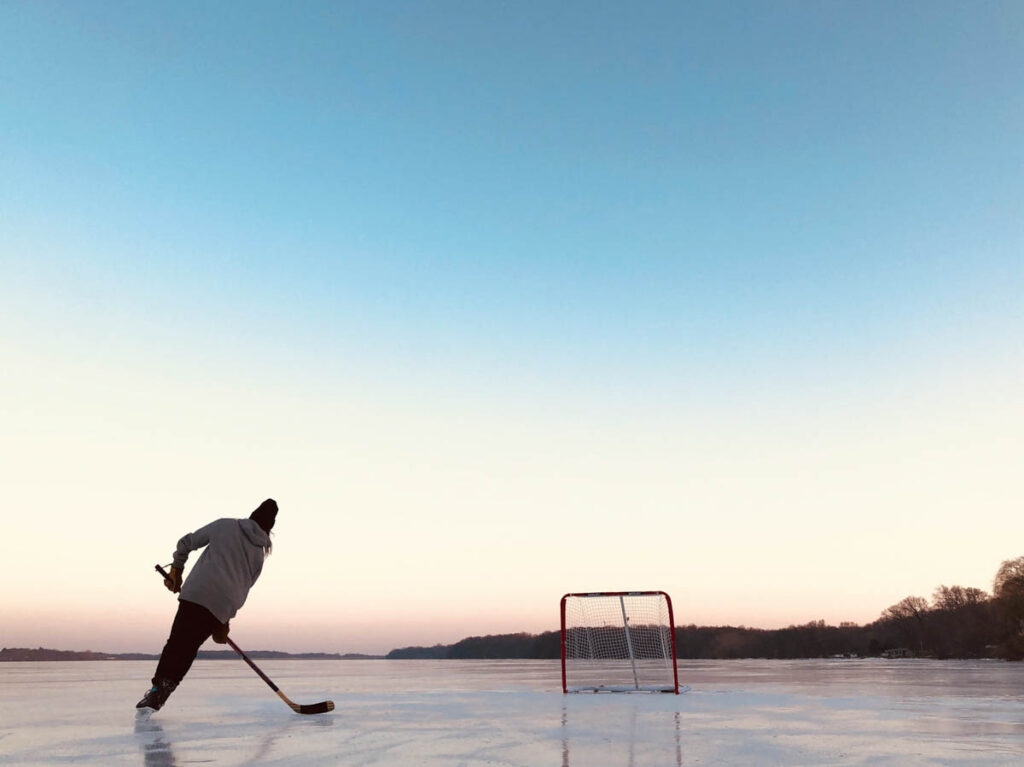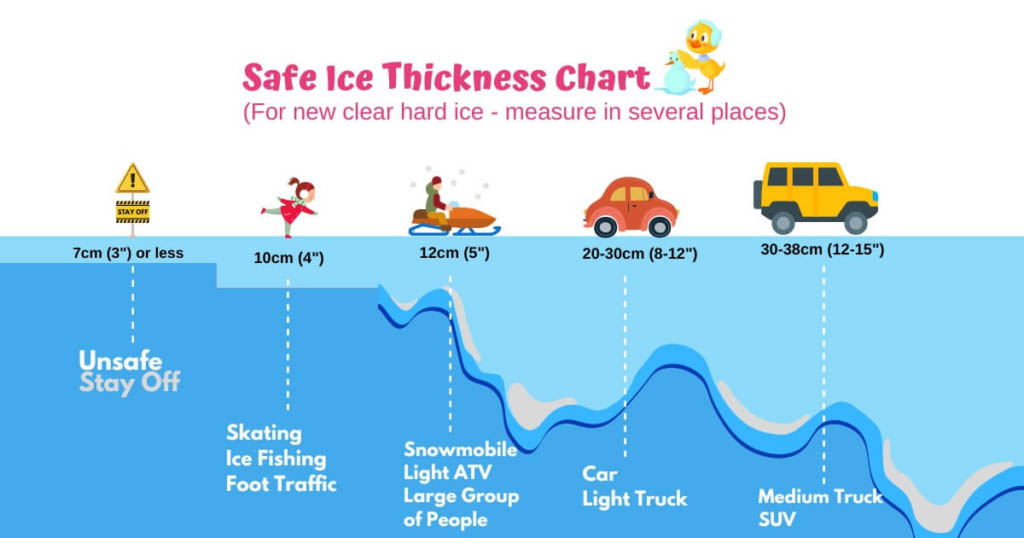Winter brings misery in the form of snowstorms/blizzards, winter travel advisories, and frequently brings travel to a halt. Even the best-laid plans for vacations frequently come to an abrupt stop. For some in the very far north of Canada, the winter allows communities to connect, such as the ice roads from Inuvik to Aklavik. The winter ice road season typically runs from January to early April. However, in some years, the ice road from Inuvik to Aklavik has remained open for five months, with the weather co-operating.
Read The Scuba News Canada’s article on Ice Roads
However, ice in the form of frozen lakes/ponds and rivers offers numerous winter activities and fun in a variety of forms. Ice fishing, lake skating, snowmobiling, pond hockey, and ice diving are just a few examples of ice-based activities. Before venturing out onto a frozen lake or river in Ontario, exercise extreme caution. Temperature changes and fresh snowfall can help to conceal thin ice.
Because determining ice safety is often up to your own discretion, start with these important tips. You might think that the first step is to measure the thickness of the ice, but there are two important steps before that.
3 Steps for Ice Safety
There are three distinct steps needed to assess ice safety:
- Perform a visual inspection.
- Notice the colour of the ice.
- Measure the thickness of the ice.
It is critical to complete these three steps (explained in greater detail below) before setting up your fishing rod, tying up your skates, or starting your snowmobile engine. Do not assume that the ice is safe. This is important all year, but especially in the early winter and late spring.
Three steps in detail
You’ve chosen your lake and arrived on site. You must now complete the visual inspection.
- Visual Inspection
During your visual inspection, keep in mind that logs and rocks absorb solar heat, causing faster melting and slower ice formation.
If you notice any of the following signs during your visual inspection, do not go out on the ice:
- Cracks, breaks or holes in the ice
- Water on top of the ice
- Water flowing onto the ice
- Ice that’s soft or mushy
- Flowing springs in spring-fed ponds and lakes
- Ice that appears to have thawed and refrozen
- Snow on the ice; snow can warm up the ice as it acts like an insulator
- Ice colour
The next step in the inspection is to examine the colour of the ice, which is critical. There are three colours of ice, and each means something different when it comes to its strength:
Dull grey is a sure sign of dangerous ice. This grey colour indicates that the ice is unsafe and contains water. This ice will not support much weight. Grey is very common in the spring and in faster moving water throughout the winter.
White opaque ice, also known as snow ice, has only half the strength of blue ice. It is formed when wet snow freezes on top of existing ice. It can be very dangerous if this ice has formed on top of the ice.
- Ice measurement
The final step is ice measurement, which must always be completed. Don’t test alone; always use the buddy system. To create a small hole in the ice, use an ice auger or spud bar, or chip it with an axe or hatchet. Then, measure the thickness of the ice. Continue to monitor the ice thickness as you travel around the lake. Remember that ice thickness is not uniform across most lakes and rivers.
When planning a day of skating, a group requires more ice than a single skater. The Canadian Red Cross recommends that ice be at least 15 cm (6 inches) thick to carry a single person, but if you’re going out with a group of friends for skating or a game of shinny, make it 20 cm (8 inches).
The minimum ice thickness for a sled or snowmobile is 25 centimetres (10 inches). Keep in mind that the thickness of the ice varies as you move around it, so check the depth frequently.
Ice thickness for a sled or snowmobile must be at least 25 centimetres (10 inches). Always keep in mind that the thickness of the ice varies, so check it frequently.
Before leaving home, check with local authorities, and never go out on the ice at night. Always tell someone where you’re going and when you expect to return. Wear appropriate clothing and bring the necessary equipment for safety and comfort.
For a quick reference, check the recommended safe ice thicknesses for most ice related activities according to the Canadian Red Cross.






